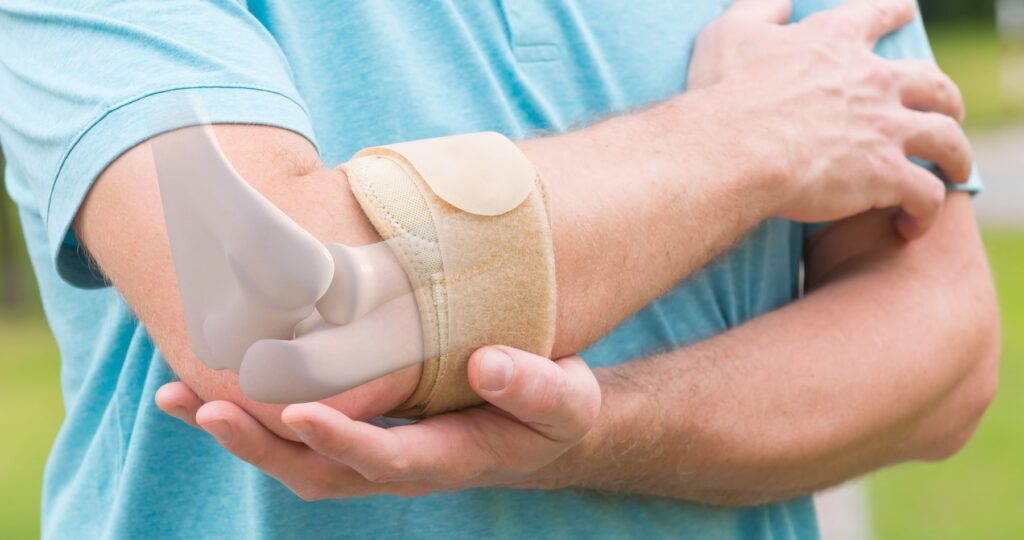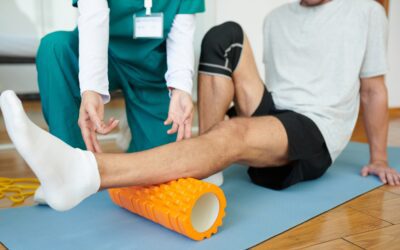If you’re dealing with persistent pain on the outside of your elbow, gripping a coffee mug or swinging a tennis racket might feel impossible. And despite the name, tennis elbow doesn’t just affect athletes. It’s a common overuse injury that can sideline anyone — from weekend warriors to mechanics, painters, or avid gardeners. Fortunately, there’s a regenerative solution that’s helping many people heal without surgery: Platelet-Rich Plasma (PRP) therapy.
Tennis elbow, a common overuse injury, can be a source of chronic pain and discomfort. Traditional treatments often provide temporary relief, but PRP offers a more lasting solution.
Platelet Rich Plasma (PRP) injections are an innovative treatment that leverages the body’s own healing mechanisms, offering a promising approach to managing tennis elbow.
In this article, we delve into the science behind PRP to explore how this therapy works, the procedure involved, and its potential benefits. This comprehensive guide to PRP injections for tennis elbow is for you, whether you’re a patient seeking elbow pain relief, a healthcare professional, or simply curious about advanced medical treatments,
What Is Tennis Elbow?
Tennis elbow, or lateral epicondylitis, is a condition caused by small tears in the tendons that connect the forearm muscles to the outside of the elbow.
These tears result from repetitive motions — like swinging, typing, lifting, or even using tools — and can lead to inflammation, stiffness, and chronic pain.
Symptoms include:
- Pain or burning on the outside of the elbow
- Weakened grip strength
- Discomfort that worsens with activity
Left untreated, tennis elbow can linger for months or even years, disrupting work, workouts, and everyday life.
Why Is It So Hard to Treat?
Because it’s an overuse injury, tennis elbow often doesn’t respond well to rest alone. Cortisone injections may offer temporary relief, but they don’t repair the underlying tendon damage — and repeated steroid use may even weaken tissue over time. That’s where PRP comes in.
Understanding Tennis Elbow and PRP Therapy
Tennis elbow is characterized by pain and tenderness in the outer elbow. It’s often caused by repetitive strain on the forearm muscles, leading to small tears in the tendons that attach to the elbow’s lateral epicondyle.

Traditional treatments for tennis elbow include:
- Rest and physical therapy
- Nonsteroidal anti-inflammatory drugs (NSAIDs)
- Corticosteroid injections
- Surgery (in severe cases)
Regenerative treatments for tennis elbow include:
Platelet Rich Plasma (PRP) therapy, which offers a different approach. It’s a form of regenerative medicine that uses the patient’s own blood components to promote healing.
What Is PRP and How Does It Work?
PRP (Platelet-Rich Plasma) is a regenerative treatment that uses your body’s own healing power.
A small amount of your blood is drawn and spun in a centrifuge to isolate platelets — the components rich in growth factors that promote tissue repair. These concentrated platelets are then injected directly into the damaged area of the tendon. Once injected, PRP jumpstarts a natural healing response, stimulating the repair of micro-tears and encouraging new tissue growth.
“PRP gives us a way to jumpstart the body’s own healing process,” says Dr. Ryan Wood, a regenerative medicine specialist in Portland. “When we pair it with physical therapy, we’re reinforcing that healing with movement, strength, and better mechanics — and that’s when real recovery happens.”
Is PRP Effective?
Yes — and the research backs it up. Studies have shown that PRP is more effective than cortisone shots for long-term relief of tennis elbow. It addresses the root cause — tendon damage — rather than just managing symptoms.
And because PRP uses your own blood, the risk of adverse effects is extremely low.
The Science Behind PRP
PRP is a concentration of platelets in plasma, obtained from the patient’s own blood. Platelets are cells that play a crucial role in clotting and wound healing. They release growth factors that stimulate tissue regeneration, making them ideal for treating overuse injuries like tennis elbow.

The process begins with a simple blood draw. The blood is then spun in a centrifuge to separate the platelets from other blood components. The resulting platelet-rich plasma is then ready for injection into the affected area.
Injecting PRP into damaged tissues will stimulate the body’s natural healing response. The growth factors released by the platelets can enhance collagen production, promote angiogenesis (the formation of new blood vessels), and modulate inflammation, all of which are essential for tissue repair and regeneration.
PRP Injection Procedure for Tennis Elbow
The PRP injection procedure is relatively straightforward.
- After the PRP is prepared, the area around the elbow is numbed with a local anesthetic.
- The PRP is then injected directly into the damaged tendon under ultrasound guidance.
The use of ultrasound imaging ensures precise placement of the PRP, maximizing its therapeutic potential. The entire procedure typically takes less than an hour, and patients can usually return home the same day.
- Post-procedure care involves rest and avoiding strenuous activities for a few days.
- Physical therapy may also be recommended to aid recovery and strengthen the affected muscles and tendons.
According to Dr. Ryan Wood of NW Regen in Portland, “For patients struggling with chronic elbow pain, PRP and physical therapy together are a game-changer. It’s incredibly rewarding to see people regain strength, confidence, and quality of life without surgery.”

Efficacy of PRP Injections in Treating Tennis Elbow
The efficacy of PRP injections in treating tennis elbow has been the subject of numerous studies. Many have reported positive outcomes, with patients experiencing significant reduction in pain and improvement in function. However, it’s important to note that results can vary.
“When we combine PRP with a targeted physical therapy program, we’re not just masking pain — we’re actively stimulating tissue repair. It’s one of the most effective ways I’ve seen to accelerate healing for tendon injuries like tennis elbow.” – Dr. Ryan Wood
The success of PRP treatment depends on several factors, including the severity of the injury, the patient’s overall health, and the quality of the PRP preparation. Despite these variables, PRP injections have shown promise as a viable treatment option for tennis elbow, particularly for patients who have not responded to traditional therapies.

Clinical Evidence and Case Studies
Several clinical trials have demonstrated the potential benefits of PRP injections for tennis elbow.
- Many patients report pain relief and improved function within 4–6 weeks
- Fewer side effects than cortisone or surgery
- Backed by research: studies show PRP improves healing in tendon injuries
In one study, patients who received PRP injections showed greater improvement in pain and function compared to those who received corticosteroid injections. Case studies also provide valuable insights. For instance, a pro tennis player was able to return to play just weeks after receiving PRP treatment for a severe case of tennis elbow. This case highlights the potential of PRP to not only alleviate symptoms but also expedite recovery.
While more research is needed to fully understand the benefits and limitations of PRP, the existing evidence suggests that it can be an effective treatment for tennis elbow.
Comparing PRP to Traditional Tennis Elbow Treatments
Traditional treatments for tennis elbow often involve a combination of rest, physical therapy, and medication. In more severe cases, surgery may be required. However, these treatments do not always provide long-term relief and may have side effects.
PRP injections offer a different approach. By harnessing the body’s own healing mechanisms, PRP aims to promote tissue regeneration and repair. This can lead to more sustainable results and fewer side effects compared to traditional treatments.
However, it’s important to note that PRP is not a magic bullet. It should be considered as part of a comprehensive treatment plan, tailored to the individual patient’s needs and circumstances.

Risks and Potential Side Effects of PRP
Like any medical procedure, PRP injections carry some risks. These may include:
- infection,
- nerve damage, and
- pain at the injection site.
However, these risks are generally low, particularly when the procedure is performed by a skilled and experienced clinician. Potential side effects of PRP may include:
- temporary pain or swelling at the injection site.
- These are typically mild and subside within a few days.
It’s important for patients to discuss these potential risks and side effects with their healthcare provider before deciding on PRP treatment.
Recovery and Post-Procedure Care
Patients are usually advised to rest the affected area for a few days post-procedure. Physical therapy may also be recommended to aid recovery and strengthen the affected tendon.
After a PRP injection, patients may experience some discomfort. This is a normal part of the healing process. Pain relief medication can be used to manage this, but it’s important to avoid anti-inflammatory drugs as they can interfere with the healing process.
Long-Term Outcomes and Recurrence Rates
PRP injections have shown promising results in the treatment of tennis elbow. Many patients report significant improvement in pain and function, often within a few weeks of treatment.
However, individual results can vary, and some patients may require more than one treatment.
While PRP can help to reduce the recurrence rate of tennis elbow, it’s not a guaranteed cure.
Lifestyle factors, such as continued overuse of the elbow, can contribute to recurrence. Therefore, a holistic approach to treatment, including lifestyle modifications and physical therapy, is often recommended.

Is PRP Right for You?
If you’ve been living with chronic elbow pain that hasn’t responded to rest, stretching, or cortisone injections, PRP may be worth considering — especially if you’re hoping to avoid surgery.
PRP is best suited for individuals with:
- Chronic tendon pain lasting more than 3 months
- Partial tendon tears or degeneration (not full ruptures)
- Active lifestyles and a desire for a natural recovery
Some insurance plans now cover PRP, though many providers offer cash-pay options if needed.
Don’t Let Elbow Pain Hold You Back
Tennis elbow may be common, but that doesn’t mean you have to live with it.
PRP therapy offers a safe, natural, and highly effective solution to get you back to doing what you love — without surgery or long recovery times.
If you’re ready to explore your options, schedule a consultation with NW Regen.
We specialize in tendon injuries. Relief might be closer than you think.
NW Regen
We offer regenerative and interventional medicine – tailored to empower you with a more vibrant, active lifestyle.


